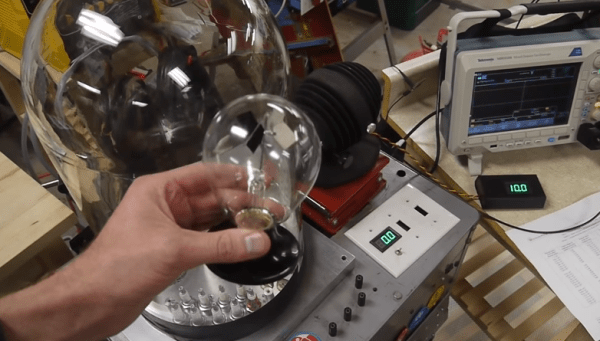[Ben Krasnow] is tackling the curious Crookes Radiometer on his Applied Science YouTube channel. The Crookes Radiometer, a staple of museum gift shops everywhere, is a rather simple device. A rotor with black and white vanes rotates on the head of a needle. The entire assembly is inside a glass envelope. The area inside the glass is not at a hard vacuum, nor is it filled with some strange gas. The radiometer only works when there is a partial vacuum inside.
The radiometer’s method of operation was long misunderstood. Sir William Crookes and James Clerk Maxwell both believed that the vanes moved due to the pressure of the photons hitting the vanes. If that were true though, the radiometer would spin in the opposite direction it normally does when held near a light source. It was eventually discovered that the system is a thermodynamic one. [Ben] proves this by cooling down the radiometer’s glass with a can of freeze spray. The radiometer immediately begins spinning backwards, with no light source present.
From there [Ben] mounts the rotor of a radiometer inside his vacuum chamber, which many will recognize as the chamber from his DIY electron microscope. As expected, the vanes don’t spin at a hard vacuum. In fact, [Ben] find the vanes spin fastest when the pressure is about 7 mTorr.
Continue reading “[Ben Krasnow] Shows Us How A Crookes Radiometer Works”











